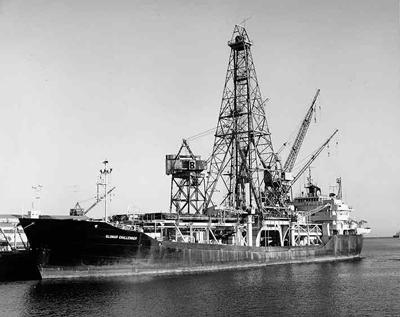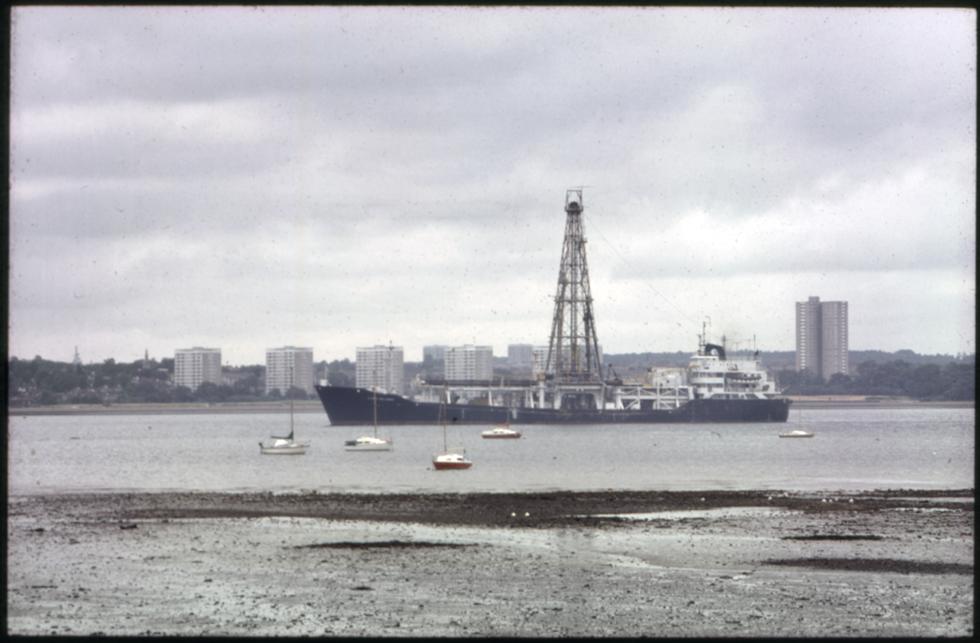Southampton celebrates 50 years of Scientific Ocean Drilling

Colleagues old and new gathered at the National Oceanography Centre Southampton for an SMMI-hosted event to celebrate 50 years of Scientific Ocean Drilling – arguably the most successful enduring multidisciplinary international scientific research collaborations.
University of Southampton scientists from the old Geology and Oceanography departments, and from the UK government Institute of Ocean Sciences (the groups that were co-located to form the Southampton Oceanography Centre, now NOCS) have been strongly involved in scientific ocean drilling since its inception. From the heroic days of the Deep Sea Drilling Project (1968 to 1983) and the voyages of Glomar Challenger, through the Ocean Drilling Program (1983-2003) to the multi-vessel International Ocean Discovery Program (IODP, 2003- ) involving the drillships JOIDES Resolution, Chikyu, and bespoke mission specific platforms, Southampton’s engagement and leadership has been continuously increasing.
Presentations at this event contrasted the latest results from drilling active volcano-hosted hydrothermal systems (Prof Steve Roberts), to the fault zones that have caused major recent tsunamigenic earthquakes (e.g., Sumatra, Tohoku; Prof Lisa McNeill), and the high-profile drilling of the Chicxulub crater, the site of the asteroid impact that caused to the extinction of the dinosaurs (led by Southampton geophysics graduate Prof. Joanne Morgan, Imperial College London), with reminiscences of the early days when both scientists and industry were first trying to core in the open deep ocean. Sir Anthony Laughton FRS recollected his first interactions with DSDP, initially a solely US program, that led to the UK being the first country to join the Project and him serving as Co-Chief scientist on DSDP Leg 12 that traversed the North Atlantic in 1970 drilling then unknown strata from Boston to Lisbon via the Labrador Sea and Iceland Basin. Profs Bob Whitmarsh, Norman Hamilton, and Alan Kemp highlighted the changing technology and dynamics of ship board life, and the career-building research and collaboration opportunities created when world-leading and early career scientists are immersed in the same science goals for 8 weeks at sea. Dr Roz Coggon, a new Royal Society University Research Fellow at Southampton, recounted both what ocean drilling has done for the advancement of understanding our planet’s evolution, life and climate, but also how involvement in ocean drilling expeditions has shaped her career. This includes the recent scheduling of two upcoming expeditions to drill to an age transect across the South Atlantic Ocean, a project that she leads.
The local Southampton event is being followed by a major international meeting hosted by the NERC UK-IODP community at the Natural History Museum (27-28th September, 2018) convened by Damon Teagle, Roz Coggon, Richard Herrington (NHM) and Carrie Lear (Cardiff).
.jpg_SIA_JPG_fit_to_width_XL.jpg)

